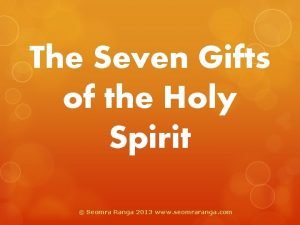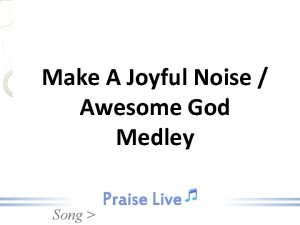Architecture is AweSome EyeTracking and Awe in a

- Slides: 1

Architecture is Awe-Some: Eye-Tracking and Awe in a Museum Environment 1 Nguyen , Christine T. William L. D. Christopher E. Sheila Krogh 1 1 2 2 Jespersen , Kimberly A. Quinn , Aaron Price , & Jana Greenslit 1 De. Paul 1 Krenzer , University and 2 Museum 1 Cole , of Science and Industry, Chicago Correspondence: cnguye 25@mail. depaul. edu Introduction Does architecture influence awe? Q 1: Which features of the external museum environment draw the most visual attention? Q 2: Is eye-gaze behavior associated with awe? Method Overview Participants: 6 adult guests (5 male, 1 female) aged 18 -48 years (M = 30. 67, SD = 8. 42) Procedure: Guests approached the building from the right. The heat map depicts visual attention, such that brighter colors indicate increasing amounts of eyegaze. Participant 1 Awe Liberating/connecting Oppressing/isolating Chills & goosebumps Small self in vast world 3. 00 -0. 33 0. 20 0. 00 0. 33 Note. Awe = 0 to 6. SAS subscales = -3 to +3. Participant 2 Awe Liberating/connecting Oppressing/isolating Chills & goosebumps Small self in vast world 4. 00 1. 17 -2. 60 0. 50 -1. 67 Note. Awe = 0 to 6. SAS subscales = -3 to +3. Guests wore Tobii Pro 2 eyetracking glasses as they approached the MSI-Chicago Participant 3 Awe Liberating/connecting Oppressing/isolating Chills & goosebumps Small self in vast world 3. 00 1. 00 -1. 00 0. 67 Note. Awe = 0 to 6. SAS subscales = -3 to +3. Participant 4 Awe Liberating/connecting Oppressing/isolating Chills & goosebumps Small self in vast world 3. 00 -0. 20 -0. 75 -3. 00 -2. 67 Note. Awe = 0 to 6. SAS subscales = -3 to +3. Participant 5 Awe Liberating/connecting Oppressing/isolating Chills & goosebumps Small self in vast world Participants reported amount of awe and completed the 4 -factor Situational Awe Scale (Krenzer et al. , in prep) Note. Awe = 0 to 6. SAS subscales = -3 to +3. Which features of the external museum environment draw the most visual attention? Guests spent the most proportion of time looking at features of the building, like upwards toward the columns and dome. Is eye-gaze behavior associated with awe? Overall awe: -Proportion of time spent looking at the building is associated with higher self-reported awe. -Proportion of time spent looking at grass and trees is associated with lower self-reported awe. Awe as liberating/connecting: -Time spent looking at the building is associated with higher self-reported feelings of liberation/connection. -Time spent looking at grass and trees is associated with lower self-reported feelings of liberation/connection. Awe as oppressing/isolating: -Time spent looking at the building is associated with lower self-reported feelings of oppression/isolation. -Time spent looking at grass and trees is associated with higher self-reported feelings of oppression/isolation. Awe as causing chills & goosebumps: No association with visual attention was observed. Awe as highlighting a small self in a vast world: 1. 00 1. 50 -3. 00 0. 50 0. 67 Note. Awe = 0 to 6. SAS subscales = -3 to +3. Participant 6 Awe Liberating/connecting Oppressing/isolating Chills & goosebumps Small self in vast world Preliminary Results 3. 00 1. 67 -3. 00 -Proportion of time spent looking at the building is associated with lower self-reported feelings of small self/vast world. -Proportion of time spent looking at grass and trees is associated with higher self-reported feelings of small self/vast world. Reference Krenzer, W. L. D. , Quinn, K. A. , Mroczkowski, A. , Krogh-Jespersen, S. , Price, C. A. , & Greenslit, J. (in preparation). Measuring awe: Scale development and validation.

